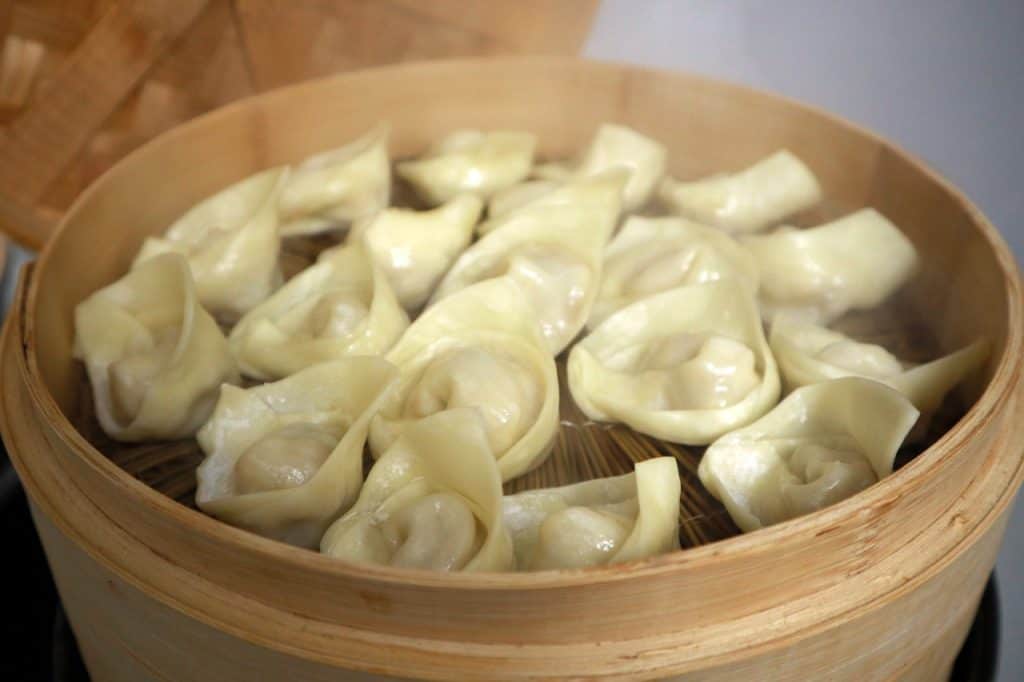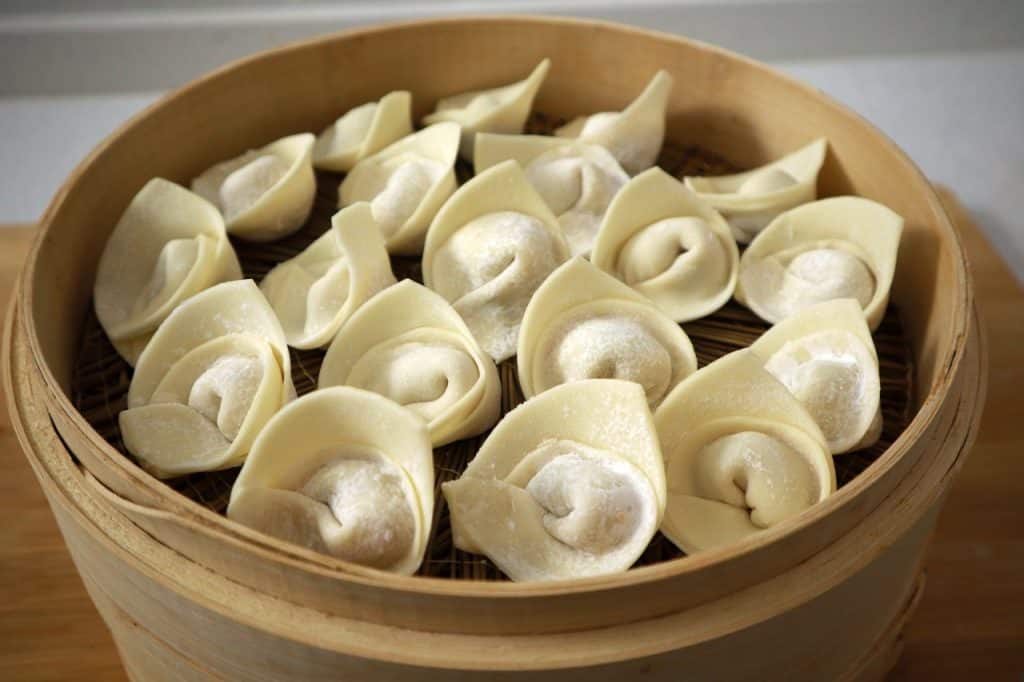Ultimate Guide to Dumplings from Around the World
The moment someone mentions ‘dumplings’ all thoughts veer in the direction of Chinese dumplings, as they are probably the most famous. However, ‘dumplings’ exist in other cuisines as well, in various shapes, sizes and flavours. A dumpling can be simply described as a ‘filling encased in a flour dough.’ The fillings can consist of meats, seafood, vegetables or sweet ingredients. The outer casing is usually made from flour that is kneaded into dough and rolled out into thin circles (like tiny tortillas). The fillings are encased within this dough and the dumpling is formed! It then needs to be boiled, steamed, pan-fried, air-fried or deep-fried as the recipe requires. Whether you make dumplings yourself or you buy them, dumplings are always a pleasure to eat.

An overview of dumplings from around the world
Chinese dumplings
Being world-famous, traditional Chinese dumplings are called jiaozi. The casing is soft dough made from plain wheat flour kneaded with water and the fillings are a mix of meats and vegetables. The cooking process differs for different types of dumplings and are either boiled or steamed and served with dipping sauces like soy sauce, vinegar and chilli oil. The dumplings are often cooked in a soup broth, which makes it a full meal. One of the most famous dumplings is the xiaolongbao, commonly called the ‘soup dumpling.’ These are succulent dumplings with a delicate flavour of meat (traditionally pork) and are filled with pieces of gelatinized broth that melts to form a soup when the dumpling is steamed. Potstickers are another variety wherein the crescent-shaped dumplings are pan-fried initially and then steamed giving the dumplings a crispy edge. The Cantonese style ‘shu mai’ is a cylindrical dumpling, open at the top with a topping of fish eggs or finely shredded carrot. The filling for the ‘shu mai’ is a mix of shrimp and pork. Wontons are another variety that is most often prepared in soups or fried crispy as an appetiser. While the fillings are similar, the wonton skins are square, and the folds of the dumpling are different. Some dumplings like ‘har gow’ use wrappers made from tapioca flour that give them a translucent appearance and chewy texture.

Polish Pierogi
The term ‘pieróg’ in Poland refers to semi-circular dumplings that are stuffed with meats and vegetables and are like the potstickers of China. The dough for pierogi is unleavened (prepared without any raising agents). The popular pierogis have potatoes as the main filling with additional ingredients such as meats, sauerkraut and cheese. The cooking style varies a bit as the pierogis are first boiled and then pan-fried in butter thereby imparting an enhanced flavour to the outer casing as well. The pierogis can be eaten with toppings of Greek yoghurt, sour cream, more butter, or enhanced with caramelised onions.
Ukrainian Halushki
Similar to the pierogi, the halushki is also stuffed with a mix of potatoes, cheese and meat. The dough is prepared with flour, eggs and water and rolled into sheets. Small dumplings are formed and then boiled. Thereafter, they are tossed in butter and served with a topping of crispy bacon, mushrooms and fried onions. Besides being a popular dish in Ukraine, it is also well-known in Tsjechie and Hungaria.
Japanese Gyoza
Like the potsticker dumplings, the gyoza is a moon-shaped dumpling that’s pan-fried. They are different in terms of being a smaller size and prepared with thin dumpling skins. The stuffing consists of finely chopped meats and vegetables.

Georgian Khinkali
These meat-filled dumplings are shaped like moneybags with a thick top clump where the dumpling is pinched, twisted, and sealed. These are very popular for long dinner celebrations in Georgia. Usually filled with juicy meat, they are often stuffed with potatoes, mushrooms and vegetables as well. The dumplings are first bitten into from one side to suck the juice out and then chewed. Sometimes, the doughy clump (stem) is discarded.
Korean Mandu
Similar to the Chinese dumplings, mandu can be steamed, boiled or fried. Prepared in different shapes, chopped sour kimchi, mung bean sprouts, and tofu are typical filling ingredients together with pork.
Nepalese Momo
Momos are either fried or steamed dumplings filled with meat, vegetables, paneer or tofu. The most common stuffing is buffalo meat followed by chicken. The meat is prepared with flavourings and spices such as ginger, garlic and cumin. The momos are served with a dipping sauce (achar) made with tomatoes, ginger, garlic, turmeric, coriander and cumin.
For preparing tofu, why not have a look at our guide on pressing tofu?
Vietnamese Banh Bot Loc
These dumplings have a gorgeous translucent appearance with an orangey glow from inside. The outer skin is made of tapioca flour with a filling of pork belly and shrimp. The cooking process is slightly different as these Vietnamese dumplings are wrapped in banana leaves and then steamed.
Mongolian Buuz
Though like other steamed dumplings, the buuz differ in the filling ingredients, which is ground (minced) mutton or beef flavoured with onions and garlic. The dish is traditionally eaten at home during Tsagaan Sar, the Lunar New Year. The khuushuur is a pan-fried variation of the buuz.